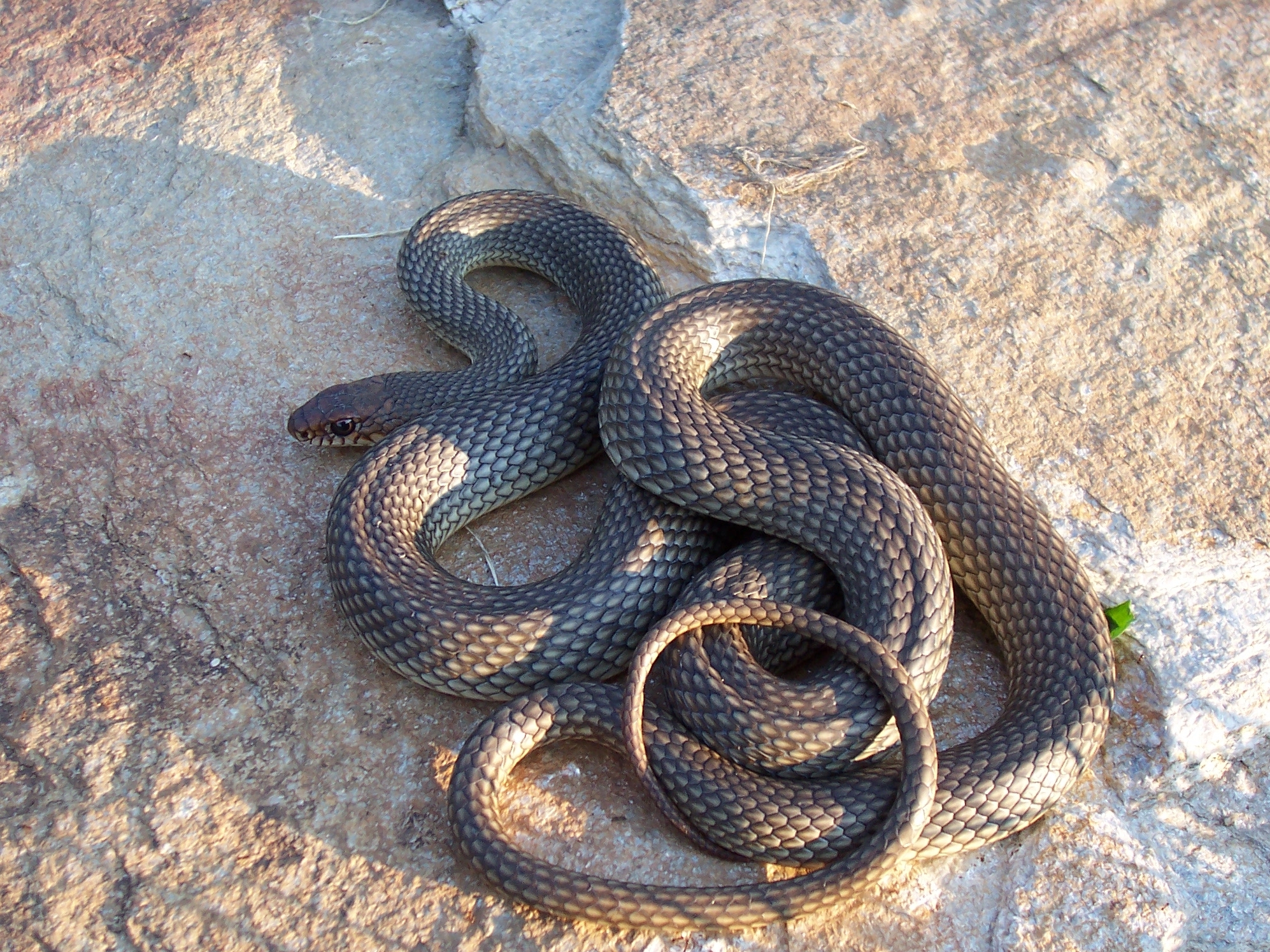Caspian whipsnake
Balkan Spring Snake ( Dolichophis caspius )
The Balkan Spring Snake ( Dolichophis caspius ), also known as Hierophis caspius, Coluber caspius, known Caspian Spring snake or Caspian Whip Snake, one within the family of snakes ( Colubridae ) to the genus Dolichophis. The species was first described in 1789 by Johann Friedrich Gmelin scientifically.
- 5.1 Literature
- 5.2 Notes and references
Features
The Balkan Spring snake can reach a body length of 140 to 170 cm. With special copies of more than 200 cm it is one of the largest snake species in Europe. She is a big but generally relatively very slim built snake with a long tail. The head is small and is only slightly away from the body, he has large eyes with round pupils. Grown Balkan Spring snakes have a gray to olive base color without special drawings or samples. However, show up in the middle of the darker body shed ever a bright and oblong shaped core, this leaves the queue if necessary appear slightly teased. Individuals of the southeastern Balkan peninsula are often characterized by a reddish or orange colored head. The scales of the belly are lighter, usually olive-yellow to orange- yellow and without screening. Juveniles have a dark bars pattern on the back and flanks spots on light background in contrast to the adult Balkan Spring snakes. Paying attention to the scales on this type, show up at her smooth and non- keeled body scales, 19 dorsal scale rows at the top of a rein shield ( Loreale ), two Voraugenschilder ( Praeocularia ), the upper is visibly larger, two to three Hinteraugenschildchen ( Postocularia ) on the front edge of the eye a sub eye shield ( Suboculare ) and 7-9, but usually 8 upper lip signs ( Suprallabialia ), the fourth and fifth abut the lower margin of the eye. The top of the head has extremely large signs.
Occurrence
The Balkan Spring snake has an extensive area of distribution. It occurs on the Balkan Peninsula, in the south of Romania, Greece, along with the Aegean islands (except Peloponnese, Crete and Attica peninsula ), in Turkey, around the Black Sea and eastward to the Caspian Sea. In Hungary, it is the only representative of its genus. The area inhabited by their habitats include primarily open landscape with steppe- character, light brush stock and grassland, scree slopes and heaps, meadows and clearings in deciduous forests, vineyards and overgrown gardens.
Way of life
The Balkan Spring snake is a diurnal and ground-dwelling snake that can be observed especially in the morning and late in the afternoon sunbathing. The animal is always ready to flee, when approaching and when it is startled, the Balkan Spring snake twists with a loud noise in the bushes next best. If they cornered or even taken it bites extremely violently around and can bite painfully. The name " Spring Snake " she has her ability to bite at up to half their body length forward fast thanks to, if you believe the Kazakhs, the snake can go through so even horses. For the prey spectrum of adult Balkan Spring include snakes all kinds of small mammals, including house mice, rats and hamsters, birds, reptiles such as lizards and small snakes and frogs and toads. Young snakes, however, catch small lizards and even larger lizards.
About the cold season keeps the Balkan Spring snake, depending on the regional climate and the altitude at four to six months hibernation inside in a warm place.
Reproduction
The mating season starts right after hibernation, then the males looking for willing females. If the copulation successful and the oocytes were fertilized, puts a bitch soon their eggs in a nest with a circumference of about six to twelve eggs, for example, in a hole in the ground, under stones, in a pile of leaves or similar sheltered and damp place from. The hatching of the young snakes takes place between the beginning and the middle of September.
Subspecies
While the Caspian Spring snake from The Reptile Database in the subspecies Dolichophis caspius caspius ( Gmelin, 1789) and Dolichophis caspius eiselti ( Zinner, 1972) is divided, it has recent investigations, however, no subspecies.










